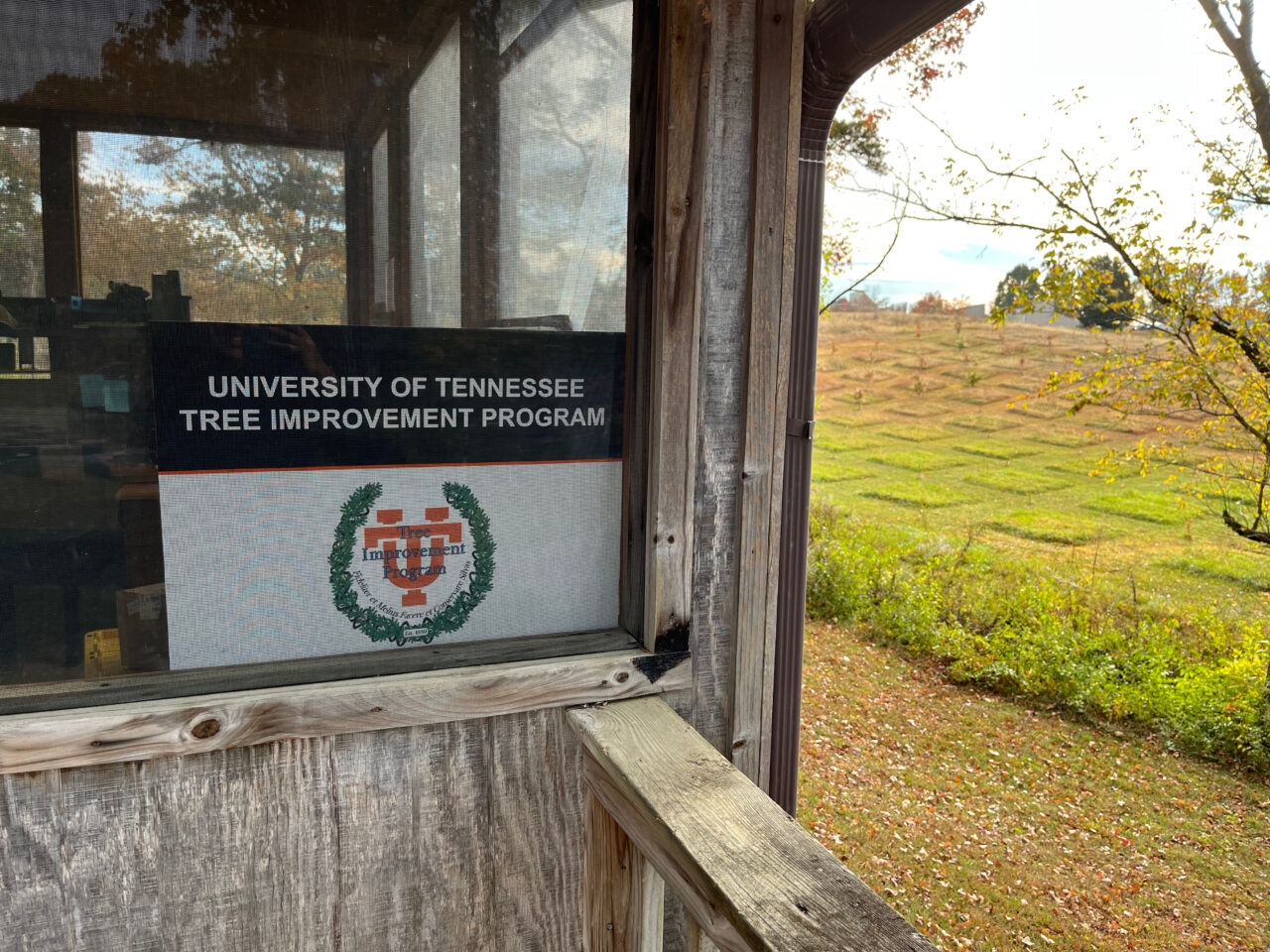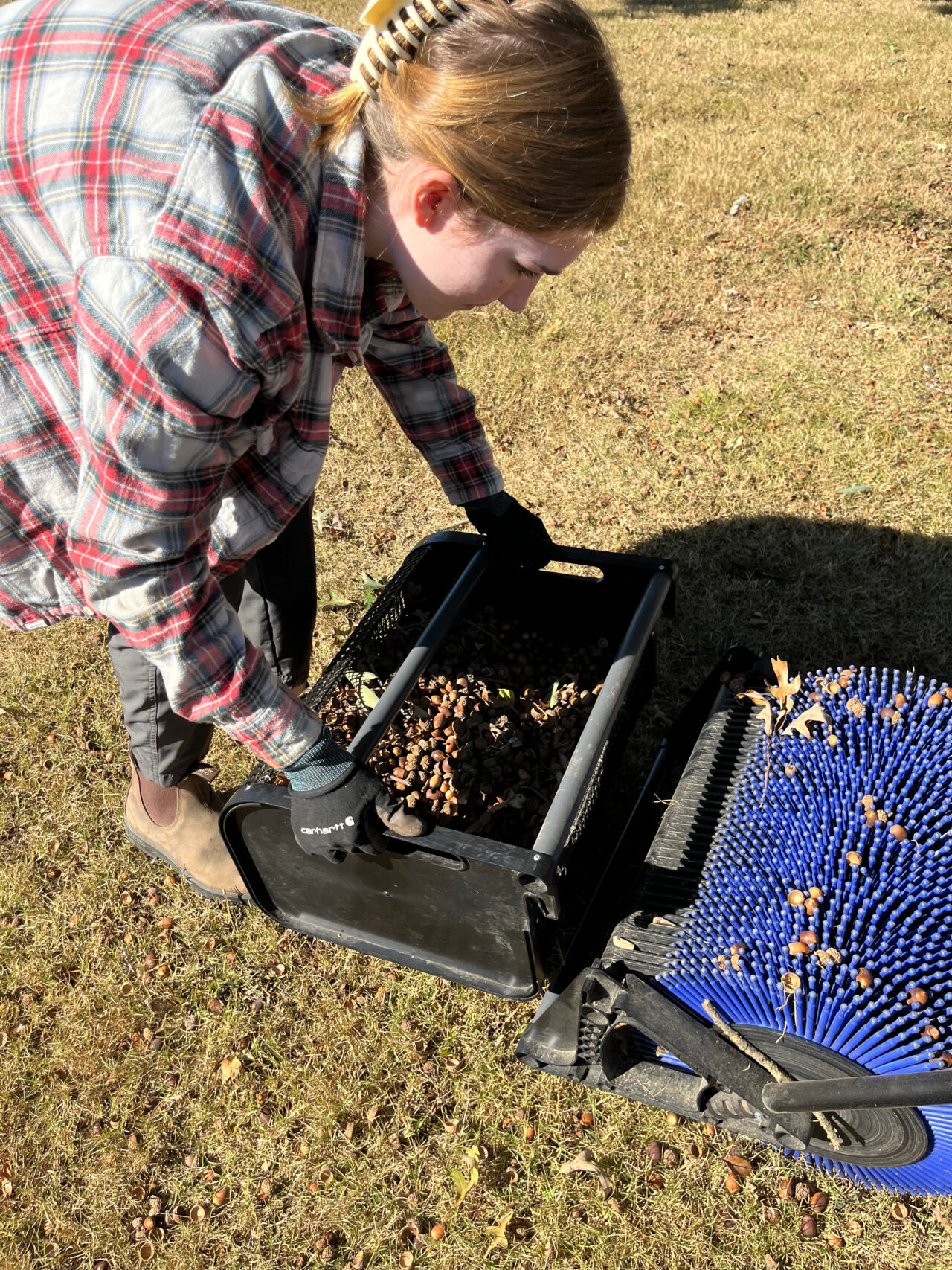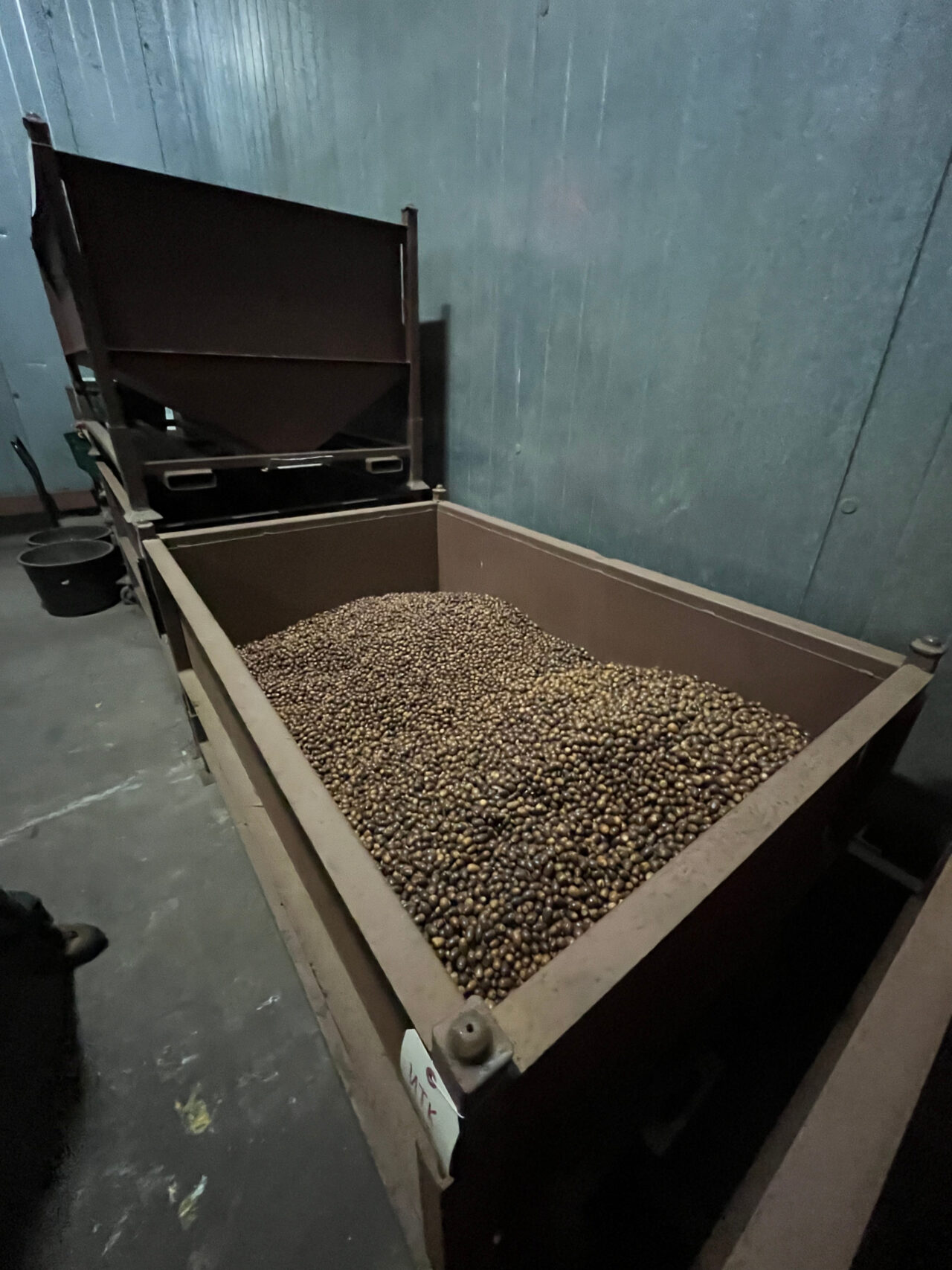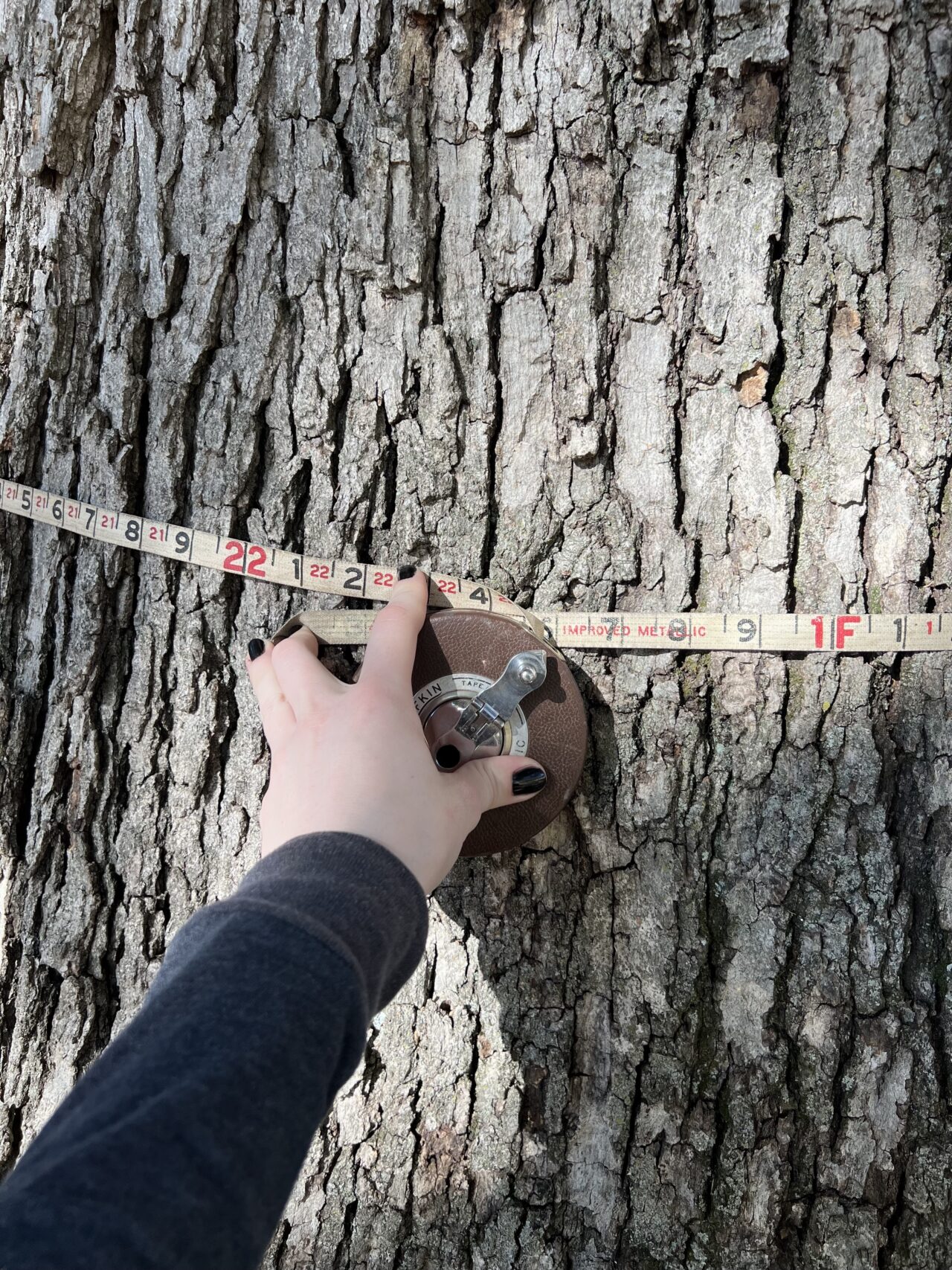
Photo Credit: Mitzy Sosa / American Forests
IT MAY BE CALLED the Volunteer State, but over the past few years, Tennessee has been faced with a growing shortage of folks stepping up to collect seeds for reforestation programs. That’s a big deal, say the forest experts at the University of Tennessee’s Tree Improvement Program, who are charged with improving the quality and productivity of the state’s forestlands in the face of climate change and other threats.
The UT Tree Improvement Program, housed at the university’s flagship campus in Knoxville, began in 1959 with a mission to provide locally adapted, genetically improved seeds to the state’s nurseries for reforestation. Reforestation is necessary for wood production, wildlife habitat, outdoor recreation and benefits such as clean water and atmospheric quality.
The seedlings are then transferred to land managers across the state, along with research and other information, to maintain and improve the state’s rich diversity of tree species, conserve rare and declining species, and tackle non-native pests.
That all starts with the individuals who collect the seeds, and the seeds themselves, all of which are in short supply.

Photo Credit: Ami Sharp
Thankfully, the program has a plan. With support from American Forests, they hired 24-year-old research specialist Erin Victorson, an energetic data-cruncher who crisscrosses the state in search of white oak acorns, crab apples and other species. She is responsible for developing a network of wild trees that can serve as seed sources for both public and private reforestation efforts across the state, along with the people to collect and process them.
“I’m collecting seed for the state nursery so that they can go into forest enrichment programs and are available for Tennessee landowners,” Victorson says.
THE QUIET CRISIS IN OUR FORESTS
American Forests has been at the forefront of addressing the seed shortage across the nation, beginning with a groundbreaking 2021 study revealing that meeting America’s reforestation goals will require 3 billion seeds a year. To get even half-way there by 2040, we need to more than double seed production to a total of 34 billion seedlings.
In 2020, American Forests’ Director of Forest Restoration Austin Rempel approached Tennessee forestry officials about their needs. Their top concern was the alarming lack of seed collectors to collect acorns and other seeds for the East Tennessee State Nursery in Delano, Tenn. In addition to professional seed collectors, Tennessee has programs encouraging volunteers to collect and donate seeds.

Photo Credit: Mitzy Sosa / American Forests
With the onset of the COVID-19 pandemic, “the guys who had been showing up on their doorstep with acorns for decades just disappeared,” Rempel says. “Some got COVID, some left the seed collection industry for other jobs or retired. So suddenly, their supply of acorns and other seeds like hickory shut off pretty quickly.”
As it happens, one of American Forests’ lead corporate partners, Arconic Foundation, was interested in funding seed-collection projects in Tennessee. UT’s Tree Improvement Program was enthusiastic and immediately hired Victorson.
“A lot of things got cut off during the pandemic,” Victorson says. “And unfortunately, a lot of things didn’t restart as a result of that. And once things stop, it’s hard to get them started again, especially that kind of thing — seed collection.”
ON THE ROAD AGAIN
Victorson spends her days focused on finding the most robust, healthy, seed-producing trees in the state, driving as much as 1,500 miles per month. Once she locates them, she contacts landowners, and if needed, collects the seeds herself. For white oak, that means using a Bag-A-NutTM that looks like a smaller version of a golf ball picker at a driving range. She then takes the acorns to UT for processing and then to the state nursery in Delano for growing into seedlings.
“Recently, the white oak regeneration rate has been a lot lower, and it’s because of the shifting climate,” she says. “It’s been warmer and wetter, and white oak is really drought tolerant. So it’s not regenerating at historical rates, and that’s why we’re focusing on it.”

Photo Credit: Mitzy Sosa / American Forests
Prior to turning her attention to white oak, Victorson spent July through September of 2023 surveying for native crab apples. In addition to intensive data collection, she created an identification guide to help people determine the difference between crab apple species, with photos and detailed descriptions of their leaves, bark, fruit and flowers. Each tree she collects from will be professionally identified by a taxonomist.
PASSING THE TORCH
If Victorson is the Luke Skywalker of seeds, Scott Schlarbaum is her Yoda. The director of the Tree Improvement Program is not just her boss, but also her mentor. He’s passing along his vast knowledge, connections and wisdom to help her do her job much quicker and more efficiently, Victorson says.

Photo Credit: Mitzy Sosa / American Forests
“Any questions I have, not just about the species, but about the business side of things and the communication part — about talking to people — is just as important as the knowledge of the species.”
Schlarbaum joined UT in 1984 and is considered one of the country’s leading forest geneticists, having researched and extensively written about forest genetics, forest health, and tree and plant cytogenetics. He’s also testified multiple times before Congress on forest health and was a science advisor to the National Park Service on nonnative pests for five years.
“I actually got my dream job,” Schlarbaum says. “I always wanted to be a university land grant school forest geneticist that ran a tree improvement program, and I was able to come here in 1984. It was just my 40th year!”

Photo Credit: Mitzy Sosa / American Forests
Schlarbaum and Victorson recently showed Mitzy Sosa, American Forests’ manager of reforestation partnerships, what goes into collecting, bagging, processing and growing acorns and seedlings. At the state nursery, they showed Sosa 8-foot-tall white oak seedlings — the tallest they’ve ever grown. They also showed her how they submerge acorns in a water tank to remove their caps, sticks and leaves, and to identify the viable ones, which float while the others sink.
“I told Scott my favorite thing is to see the passion of everyone who works at the nursery, as well as the university, or even just going to see a property and how excited they are to be able to help,” says Sosa, who oversees the partnership for American Forests. “I really do think that what Erin is doing is going to impact the supply there in Tennessee for a long time.”
NEW BEGINNINGS FOR CHAMPIONS
Most white oak orchards in Tennessee are currently too young to produce acorns for reforestation, Victorson says. So, she is mostly gathering data on wild trees, such as when their acorns drop, their acorns’ sizes, who owns them and how much prep work the ground requires before collection.
Large trees are often the biggest prize, and few get any bigger than one she found in Davidson County, which is home to Nashville. With a 22-foot circumference, the white oak sits outside a 103-year-old house that belongs to a country music star. The property manager let her collect from the tree and even invited her back next year.

Tenn. She notes that large trees,<br />
especially Champion Trees, are usually the best candidates for collecting healthy acorns.
Photo Credit: Courtesy of Erin Victorson

Photo Credit: Courtesy of Erin Victorson
She also has her eyes on several Champion Trees, including the Old Oak Tree at Tusculum University in East Tennessee’s Greenville. Another one is in Dunlap, near Fall Creek Falls State Park. Both giants are not dropping acorns this year, but as soon as they do, Victorson says she’ll be there.
Champion Trees are the largest trees of a given species in the U.S., and for 83 years, American Forests has overseen the National Champion Tree Program and the National Register of Champion Trees.
Beginning in 2023, UT officially became the new home of the program, allowing access to one of the most prestigious land grant research universities in the country. Building on years running the successful state program, the University’s School of Natural Resources plans to advance the rich legacy of the National Champion Tree Program, while expanding the science and awareness of why these trees are so critical to biodiversity conservation.
“The three words I keep coming back to in terms of my vision for the future are education, information and conservation,” says Jaq Payne, the new national director of the National Champion Tree Program. “It’s all deeply connected. We are using the Champion Tree Program as a vehicle to educate the public about the importance of trees, gain more information about the physiology and how to best care for our largest trees, and then working toward the conservation of these large trees. Considering the outsized impact they have on our landscape and our wellbeing, it’s all really important stuff.”
Prior to taking the position as national director, Payne, who recently graduated with his Master’s in Forestry from UT, was the Tennessee state director for the Champion Tree Program. He remembers with fondness the 2021 Tennessee Champion White Oak, which was determined by UT scientists to be over 400 years old. It was in the backyard of a house between a carport and a shed.

Photo Credit: Kayla Stuart
“It is stunning. It is gorgeous,” Payne says excitedly. “For me, when I’m lying awake at 2 a.m. and my mind is spiraling, I always go back to mentally cataloging all of the life that this white oak has supported over four centuries.”
Victorson is pursuing graduate school and has her eyes on an eventual doctorate. “I’m extremely passionate about this,” she says. “I’ll go sit on my computer late at night and be curious about a location or something. Then I’ll go on iNaturalist, or I’ll search through the databases that I use for plant location, even at home. I’m invested!”
This is all music to Schlarbaum’s ears. “When I came to the University of Tennessee, I don’t think there was anybody more red-hot for research than me,” he says. “But when I look back on my career, the things that bring a real smile to my face are the people who have passed through this program and watching them basically mature, and you’re intertwined with their lives.”
Lee Poston is a University of Tennessee, Knoxville alumnus who knows all the words to “Rocky Top” and writes about conservation issues from University Park, Md.